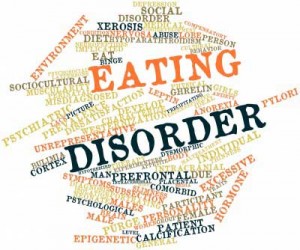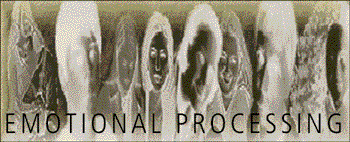There has been a lot of debate in the last thirty – forty years about genetic inheritance – with at least half of children of alcoholic families at risk for later alcoholism. What is less known is what exactly is inherited in our genes? What marks us out for later alcoholism? Prior to drinking are there aspects of our behaviour, personality or emotional responding that marks us out compared to so-called normal healthy types.
Recently research has looked at brain systems which overlap in decision making such as cognitive control over impulsive behaviour and also emotional processing. Children from alcoholics seem to have difficulties with both these overlapping circuits in the brain – they are not only impulsive but also do not seem to process emotions in the same way their “health” peers do. Research has also begun to show that emotional processing is indeed important to making decisions, as is the ability to inhibit impulsive responses.
It seems young alcoholics in the making, are not using our emotions to make decisions and are also prone to being impulsive. This difficulty with making decisions must shape all other future decisions ?
Youth for families with a history of alcoholism (FH+) are more likely to engage in early adolescent alcohol use (1), they may be more prone to experience the neurotoxic effects of alcohol use during adolescence.

Heavy alcohol use during adolescence is related to poorer neuropsychological functioning, including response inhibition (2), working memory (3-5), and decision-making (6).
Neuroimaging studies have shown that alcohol abusing teens have atypical grey matter volume in the PFC (7,8), and subcortical structures, such as the hippocampus (9,10) OFC and the amgydala.
Further, they have reduced integrity of white matter pathways, in both long-range connections between frontal and parietal brain regions as well as in pathways connecting subcortical and higher-order brain areas (11,12).
FMRI studies have found reduced BOLD response in adolescent alcohol abusers
in brain regions important affective decision-making (13).
The raging debate in research has been to whether these deficits are a consequence of heavy alcohol use or if genetic and environmental factors, such as family history of alcoholism, may contribute.
Risk Factor for Alcohol Use Disorders (AUDs): Family History of Alcoholism
The observation that alcoholism runs in families has long been documented
(14-16). Over the past few decades, adoption (17,18) and twin (19)
studies have suggested that there is an increased likelihood of individuals with a family history of alcoholism to develop the disorder themselves (20, 21).
These studies indicate that familial alcoholism is one of the most robust predictors of the development of an AUD during one’s lifetime. Furthermore, this risk factor appears to be stable over time, since it also predicts the chronicity of alcohol dependence at multiple time points (22).
This indicates that higher familial density is often associated with greater
risk (23), with genetic vulnerability accounting for about 30-50% of
individual risk (24-26).
One of the best characterized findings in individuals with familial alcoholism are greater impulsivity and difficulties in response inhibition which are commonly seen in this population (27,28), and FH+ individuals are less able to delay reward gratification compared with their peers (29).
Emotional processing and its relationship with executive control has received much less
attention in FH+ individuals.
Alcohol Use Disorders and Emotional Processing
Emotion Recognition and Affective Processing – Research suggests that alcohol use disorder (AUDs) are associated with deficits in emotion recognition
(30-33), which may be related to atypical brain structure and functioning observed in the
limbic system among alcoholics (34-37).
Alcoholics not only tend to overestimate the intensity of emotions seen in faces but they also make more negative emotional attributions and often confuse one emotion for another, such as mislabeling disgust as anger or contempt (32). Additionally, these deficits seem to be specific to alcoholism, since alcoholics, both recently abstinent and long-term abstinent, perform poorer on emotion recognition tasks than individuals with other drug abuse history (38). Alcoholics have also been shown to have slower reaction time when recognizing emotions (39).
Furthermore, poorer accuracy on emotion recognition tasks in alcoholics does not improve across the duration of the task, even though better performance is seen over time with other drug abusers (38).
Polysubstance abusing adults, the majority of whom were alcohol abusers, showed emotion recognition deficits on angry, disgusted, fearful, and sad faces (40). Based on the evidence of emotion recognition deficits in alcoholics, it is necessary to determine whether similar difficulties are present in FH+ youth that could be disruptive to emotional functioning and may contribute to the ultimately higher prevalence of alcohol abuse in this population.
Ultimately we may be observing here external emotional processing difficulties in the same manner we observed “internal” emotional processing difficulties in those with alexithymia, the reduced ability to “read” internal emotions of which a majority of alcoholics appear to suffer.
In summary, alcoholics and children of alcoholic families appear to have both external, i.e. recognition of other people’s emotions as well as their own and these may relate to immature development of brain regions which govern emotional, processing, recognition and regulation, which appears to contribute greatly to the initiation and progression of alcohol abuse.

In addition to emotional processing deficits, alcoholics have various structural
and functional abnormalities in affective processing brain regions. Studies of the limbic system have found reduced volume in subcortical structures, including the amygdala, thalamus, ventral striatum, and hippocampus among adult alcoholics (41,42). Alcoholics with smaller amygdalar volumes, are more likely to continue drinking after six months of abstinence (37).
Marinkovic et al. (2009) alcoholics exhibited both amygdalar and hippocampal hypoactivity during face encoding, and when recognizing deeply encoded faces, alcoholics had significantly reduced amygdalar activity to positive and negative emotional expressions compared with controls (35). These results help explain findings in behavioral studies of alcoholics that have found considerable evidence for emotion recognition deficits in this population.
Furthermore, during emotion identification, alcoholics showed comparable
performance to controls, but had reduced brain response in the affective division of the
anterior cingulate cortex (ACC) to disgust and sadness, with this lack of affective response to aversive stimuli believed to underlie disinhibitory traits in AUDs (36).
There is also evidence to suggest that non-alcohol abusing FHP individuals
share similar deficits in affective systems to alcohol abusers, including reduced
amygdalar volume, less amygdalar activity in response to emotional stimuli, and high
rates of internalizing symptoms such as anxiety and depression (37; 45-47).
Furthermore, research examining the relationship between emotional
processing and cognition has found that poor inhibition in individuals with co-morbid
substance and alcohol abuse is associated with atypical arousal in response to affective images (48), and affective measures in FH+ alcoholics also relate to deficits in executive functioning, e.g impulsivity (47).
This suggests that familial history of AUDs may put individuals at greater risk for problems with emotional processing and associated disruptions in executive functioning (47), which could, in turn, increase risk for alcohol abuse (49).
As we suggested previously, in relation to decision making profiles, in those at risk, those with alexithymia and also with cocaine addicts, decision making often involves more emotion expressive-motor areas of the brain like the caudate nucleus which is more of a “feel it-do it” type of reaction to decision making or a emotionally impaired or distress-based impulsivity. If there is a difficulty processing emotions, these emotions can not be used as a signal to guide adaptive, optimal decisions. Decisions appear more compulsive and short term.
It may be this tendency to act now, rather than later, that defines the vulnerability in FH+ children. It is like driving through life with faulty brakes on decision making, which sets up a chain of maladaptive choices such as alcohol abuse which then damages these affective based decision making regions of the brain even more, with increasing deleterious consequences as the addiction cycle progresses until the endpoint of addiction of very limited choice of behaviour as emotional distress acts eventually as a stimulus response to alcohol use. Emotional processing usurped by compulsive responding.
References
Main reference – Cservenka, A., Fair, D. A., & Nagel, B. J. (2014). Emotional Processing and Brain Activity in Youth at High Risk for Alcoholism. Alcoholism: Clinical and Experimental Research.
1. Dawson, D.A., 2000. The link between family history and early onset alcoholism: earlier initiation of drinking or more rapid development of dependence? J Stud Alcohol 61, 637-646.
2. Ferrett, H.L., Cuzen, N.L., Thomas, K.G., Carey, P.D., Stein, D.J., Finn, P.R., Tapert, S.F., Fein, G., 2011. Characterization of South African adolescents with alcohol use disorders but without psychiatric or polysubstance comorbidity. Alcohol Clin Exp Res 35, 1705-1715.
3. Brown, S.A., Tapert, S.F., 2004. Adolescence and the trajectory of alcohol use: basic to clinical studies. Ann N Y Acad Sci 1021, 234-244.
4. Brown, S.A., Tapert, S.F., Granholm, E., Delis, D.C., 2000. Neurocognitive functioning of adolescents: effects of protracted alcohol use. Alcohol Clin Exp Res 24, 164-171.
5. Squeglia, L.M., Schweinsburg, A.D., Pulido, C., Tapert, S.F., 2011. Adolescent binge drinking linked to abnormal spatial working memory brain activation: differential gender effects. Alcohol Clin Exp Res 35, 1831-1841.
6. Johnson, C.A., Xiao, L., Palmer, P., Sun, P., Wang, Q., Wei, Y., Jia, Y., Grenard, J.L., Stacy, A.W., Bechara, A., 2008. Affective decision-making deficits, linked to a dysfunctional ventromedial prefrontal cortex, revealed in 10th grade Chinese adolescent binge drinkers. Neuropsychologia 46, 714-726.
7. De Bellis, M.D., Narasimhan, A., Thatcher, D.L., Keshavan, M.S., Soloff, P., Clark, D.B., 2005. Prefrontal cortex, thalamus, and cerebellar volumes in adolescents and young adults with adolescent-onset alcohol use disorders and comorbid mental disorders. Alcohol Clin Exp Res 29, 1590-1600.
8. Medina, K.L., McQueeny, T., Nagel, B.J., Hanson, K.L., Schweinsburg, A.D., Tapert, S.F., 2008. Prefrontal cortex volumes in adolescents with alcohol use disorders: unique gender effects. Alcohol Clin Exp Res 32, 386-394.
9. De Bellis, M.D., Clark, D.B., Beers, S.R., Soloff, P.H., Boring, A.M., Hall, J., Kersh, A., Keshavan, M.S., 2000. Hippocampal volume in adolescent-onset alcohol use disorders. Am J Psychiatry 157, 737-744.
10. Nagel, B.J., Schweinsburg, A.D., Phan, V., Tapert, S.F., 2005. Reduced hippocampal volume among adolescents with alcohol use disorders without psychiatric comorbidity. Psychiatry Res 139, 181-190.
11. Bava, S., Jacobus, J., Thayer, R.E., Tapert, S.F., 2013. Longitudinal changes in white matter integrity among adolescent substance users. Alcohol Clin Exp Res 37 Suppl 1, E181-189.
12. McQueeny, T., Schweinsburg, B.C., Schweinsburg, A.D., Jacobus, J., Bava, S., Frank, L.R., Tapert, S.F., 2009. Altered white matter integrity in adolescent binge drinkers. Alcohol Clin Exp Res 33, 1278-1285.
13. Xiao, L., Bechara, A., Gong, Q., Huang, X., Li, X., Xue, G., Wong, S., Lu, Z.L., Palmer, P., Wei, Y., Jia, Y., Johnson, C.A., 2012. Abnormal Affective Decision Making Revealed in Adolescent Binge Drinkers Using a Functional Magnetic Resonance Imaging Study. Psychol Addict Behav.
14. Cotton, N.S., 1979. The familial incidence of alcoholism: a review. J Stud Alcohol 40, 89-116.
15. Goodwin, D.W., 1979. Alcoholism and heredity. A review and hypothesis. Arch Gen Psychiatry 36, 57-61.
16. Schuckit, M.A., 1985. Genetics and the risk for alcoholism. Jama 254, 2614-2617
17. Bohman, M., 1978. Some genetic aspects of alcoholism and criminality. A population of adoptees. Arch Gen Psychiatry 35, 269-276.
18. Cloninger, C.R., Bohman, M., Sigvardsson, S., 1981. Inheritance of alcohol abuse. Cross-fostering analysis of adopted men. Arch Gen Psychiatry 38, 861-868.
19. Merikangas, K.R., Stolar, M., Stevens, D.E., Goulet, J., Preisig, M.A., Fenton, B., Zhang, H., O’Malley, S.S., Rounsaville, B.J., 1998. Familial transmission of substance use disorders. Arch Gen Psychiatry 55, 973-979
20. Finn, P.R., Kleinman, I., Pihl, R.O., 1990. The lifetime prevalence of psychopathology in men with multigenerational family histories of alcoholism. J Nerv Ment Dis 178, 500-504.
21. Goodwin, D.W., 1985. Alcoholism and genetics. The sins of the fathers. Arch Gen Psychiatry 42, 171-174.
22. Hasin, D., Paykin, A., Endicott, J., 2001. Course of DSM-IV alcohol dependence in a community sample: effects of parental history and binge drinking. Alcohol Clin Exp Res 25, 411-414.
23. Hill, S.Y., Yuan, H., 1999. Familial density of alcoholism and onset of adolescent drinking. J Stud Alcohol 60, 7-17.
24. Heath, A.C., Bucholz, K.K., Madden, P.A., Dinwiddie, S.H., Slutske, W.S., Bierut, L.J., Statham, D.J., Dunne, M.P., Whitfield, J.B., Martin, N.G., 1997. Genetic and environmental contributions to alcohol dependence risk in a national twin sample: consistency of findings in women and men. Psychol Med 27, 1381-1396.
25. Kaprio, J., Koskenvuo, M., Langinvainio, H., Romanov, K., Sarna, S., Rose, R.J., 1987. Genetic influences on use and abuse of alcohol: a study of 5638 adult Finnish twin brothers. Alcohol Clin Exp Res 11, 349-356.
26. Knopik, V.S., Heath, A.C., Madden, P.A., Bucholz, K.K., Slutske, W.S., Nelson, E.C., Statham, D., Whitfield, J.B., Martin, N.G., 2004. Genetic effects on alcohol dependence risk: re-evaluating the importance of psychiatric and other heritable risk factors. Psychol Med 34, 1519-1530.
27. Acheson, A., Richard, D.M., Mathias, C.W., Dougherty, D.M., 2011a. Adults with a family history of alcohol related problems are more impulsive on measures of response initiation and response inhibition. Drug Alcohol Depend 117, 198-203.
28. Saunders, B., Farag, N., Vincent, A.S., Collins, F.L., Jr., Sorocco, K.H., Lovallo, W.R., 2008. Impulsive errors on a Go-NoGo reaction time task: disinhibitory traits in relation to a family history of alcoholism. Alcohol Clin Exp Res 32, 888-894.
29. Acheson, A., Vincent, A.S., Sorocco, K.H., Lovallo, W.R., 2011b. Greater discounting of delayed rewards in young adults with family histories of alcohol and drug use disorders: studies from the Oklahoma family health patterns project. Alcohol Clin Exp Res 35, 1607-1613.
30. Foisy, M.L., Kornreich, C., Petiau, C., Parez, A., Hanak, C., Verbanck, P., Pelc, I., Philippot, P., 2007b. Impaired emotional facial expression recognition in alcoholics: are these deficits specific to emotional cues? Psychiatry Res 150, 33-41.
31. Foisy, M.L., Philippot, P., Verbanck, P., Pelc, I., van der Straten, G., Kornreich, C., 2005. Emotional facial expression decoding impairment in persons dependent on multiple substances: impact of a history of alcohol dependence. J Stud Alcohol 66, 673-681.
32. Philippot, P., Kornreich, C., Blairy, S., Baert, I., Den Dulk, A., Le Bon, O., Streel, E., Hess, U., Pelc, I., Verbanck, P., 1999. Alcoholics’ deficits in the decoding of emotional facial expression. Alcohol Clin Exp Res 23, 1031-1038.
33. Townshend, J.M., Duka, T., 2003. Mixed emotions: alcoholics’ impairments in the recognition of specific emotional facial expressions. Neuropsychologia 41, 773-782.
34. Gilman, J.M., Hommer, D.W., 2008. Modulation of brain response to emotional images by alcohol cues in alcohol-dependent patients. Addict Biol 13, 423-434.
35. Marinkovic, K., Oscar-Berman, M., Urban, T., O’Reilly, C.E., Howard, J.A., Sawyer, K., Harris, G.J., 2009. Alcoholism and dampened temporal limbic activation to emotional faces. Alcohol Clin Exp Res 33, 1880-1892.
36. Salloum, J.B., Ramchandani, V.A., Bodurka, J., Rawlings, R., Momenan, R., George, D., Hommer, D.W., 2007. Blunted rostral anterior cingulate response during a simplified decoding task of negative emotional facial expressions in alcoholic patients. Alcohol Clin Exp Res 31, 1490-1504.
37. Wrase, J., Makris, N., Braus, D.F., Mann, K., Smolka, M.N., Kennedy, D.N., Caviness, V.S., Hodge, S.M., Tang, L., Albaugh, M., Ziegler, D.A., Davis, O.C., Kissling, C., Schumann, G., Breiter, H.C., Heinz, A., 2008. Amygdala volume associated with alcohol abuse relapse and craving. Am J Psychiatry 165, 1179-1184.
38. Kornreich, C., Foisy, M.L., Philippot, P., Dan, B., Tecco, J., Noel, X., Hess, U., Pelc, I., Verbanck, P., 2003. Impaired emotional facial expression recognition in alcoholics, opiate dependence subjects, methadone maintained subjects and mixed alcohol-opiate antecedents subjects compared with normal controls. Psychiatry Res 119, 251-260.
39. Maurage, P., Campanella, S., Philippot, P., Martin, S., de Timary, P., 2008. Face processing in chronic alcoholism: a specific deficit for emotional features. Alcohol Clin Exp Res 32, 600-606.
40. Fernandez-Serrano, M.J., Perez-Garcia, M., Schmidt Rio-Valle, J., Verdejo-Garcia, A., 2010. Neuropsychological consequences of alcohol and drug abuse on different components of executive functions. J Psychopharmacol 24, 1317-1332.
41. Durazzo, T.C., Tosun, D., Buckley, S., Gazdzinski, S., Mon, A., Fryer, S.L., Meyerhoff, D.J., 2011. Cortical thickness, surface area, and volume of the brain reward system in alcohol dependence: relationships to relapse and extended abstinence. Alcohol Clin Exp Res 35, 1187-1200.
42. Makris, N., Oscar-Berman, M., Jaffin, S.K., Hodge, S.M., Kennedy, D.N., Caviness, V.S., Marinkovic, K., Breiter, H.C., Gasic, G.P., Harris, G.J., 2008. Decreased volume of the brain reward system in alcoholism. Biol Psychiatry 64, 192-202.
43. Benegal, V., Antony, G., Venkatasubramanian, G., Jayakumar, P.N., 2007. Gray matter volume abnormalities and externalizing symptoms in subjects at high risk for alcohol dependence. Addict Biol 12, 122-132.
44. Glahn, D.C., Lovallo, W.R., Fox, P.T., 2007. Reduced amygdala activation in young adults at high risk of alcoholism: studies from the Oklahoma family health patterns project. Biol Psychiatry 61, 1306-1309.
45. Hill, S.Y., De Bellis, M.D., Keshavan, M.S., Lowers, L., Shen, S., Hall, J., Pitts, T., 2001. Right amygdala volume in adolescent and young adult offspring from families at high risk for developing alcoholism. Biol Psychiatry 49, 894-905.
46. Oscar-Berman, M., Bowirrat, A., 2005. Genetic influences in emotional dysfunction and alcoholism-related brain damage. Neuropsychiatr Dis Treat 1, 211-229.
47. Sinha, R., Parsons, O.A., Glenn, S.W., 1989. Drinking variables, affective measures and neuropsychological performance: familial alcoholism and gender correlates. Alcohol 6, 77-85
48. Verdejo-Garcia, A., Bechara, A., Recknor, E.C., Perez-Garcia, M., 2006. Executive dysfunction in substance dependent individuals during drug use and abstinence: an examination of the behavioral, cognitive and emotional correlates of addiction. J Int Neuropsychol Soc 12, 405-415.
49. Fox, H.C., Hong, K.A., Sinha, R., 2008. Difficulties in emotion regulation and impulse control in recently abstinent alcoholics compared with social drinkers. Addict Behav 33, 388-394












